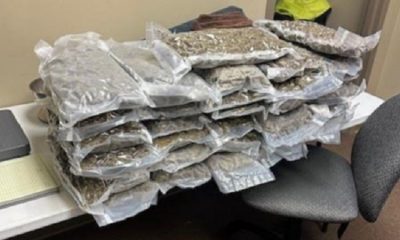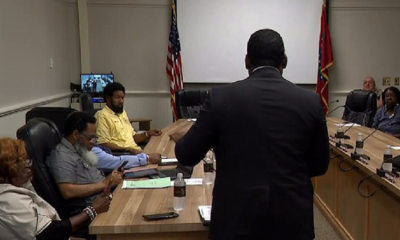Local News
Potential reasons for the disaster are revealed during an investigation into the June deadly jet crash in Lake Hamilton

Little Rock, Arkansas – A small plane piloted by Daniel Dale Jones and his daughter Denise crashed into Lake Hamilton on Monday, June 26.
Denise, 23, suffered life-threatening injuries, and Daniel, 49, died in the collision. Officials reported that she was plucked from the lake and sent to the University of Arkansas for Medical Sciences in Little Rock for treatment.
The two were flying across the country in their brand-new Cessna 177 Cardinal, stopping at several locations en route to their home in Kentucky.
The father and daughter were attempting to land at Hot Springs’ Memorial Field Airport when their jet unexpectedly lost all engine power as it approached the runway, according to a preliminary assessment by the National Transportation Safety Board.
Denise claims that her father attempted to restart the engines but was unable and radioed “mayday” to the Common Traffic Advisory Frequency, which pilots utilize when a control tower is either not available or closed.
She claimed that when the plane descended through the treetops above the lake, it had an aerodynamic stall and nose-down contact with the water.
In the vicinity of 161 Port-Au-Prince St. in Hot Springs, the plane crashed into a cove.
Data from the plane’s final four seconds of descent showed that it was flying at a speed of 61 miles per hour during that time.
According to the NTSB investigation, there were numerous problems with the Jones’ aircraft.
According to Denise’s remarks in the NTSB preliminary report, the engine would begin “stumbling” when the mixture control was pulled 1.5 to 2 inches aft of full rich when her father tried to lean the plane’s mixture of air and fuel. (A lean fuel mixture has more air and is thus more economy, while a rich mixture has a higher ratio of fuel to air and is less economical).
A “metal grinding” sound was also heard, according to Denise, as her father turned on the carburetor heat as they approached the De Queen J. Lynn Helms Airport.
The Joneses traveled to Hot Springs from De Queen.
They tried to fill the plane at the self-serve petrol pump while at the De Queen airport, but after processing their credit card at the pump, they were unable to dispense any fuel.
Denise recalled that at that time, her father used a fuel stick to check the amount of fuel still in the plane’s tanks and decided there was enough fuel to fly to Hot Springs.
Although their credit card had been processed, there was no gasoline provided, and the transaction was cancelled, according to the De Queen airport manager, who confirmed this in the NTSB’s preliminary investigation.
The airport manager also reported that the gasoline pump performed normally when checked following the Jones’ accident.
Daniel radioed the CTAF to inform them that their aircraft was running short on fuel as they were making their approach to the Memorial Field Airport in Hot Springs. Soon after, all engine power was lost by the aircraft. At this point, it is unclear if this was brought on by the plane’s running out of fuel or some other problem.
The NTSB said that its report is preliminary and subject to change as the investigation continues.
-

 Local News2 weeks ago
Local News2 weeks agoArkansas State Police seize over 4,000 pounds of illegal drugs in highway traffic stops
-

 Local News1 week ago
Local News1 week agoJefferson County is dysfunctional due to a dispute between the judge and justices
-

 Local News2 weeks ago
Local News2 weeks agoLittle Rock and North Little Rock will see lane restrictions along Interstate 30
-

 Local News2 weeks ago
Local News2 weeks agoSeveral recently painted murals in Little Rock’s downtown
-

 Local News6 days ago
Local News6 days agoMay Fest 2024 promises a joyful street
-

 Local News2 weeks ago
Local News2 weeks ago$20 million grants will be funded by the Arkansas Department of Human Services for pilot project
-

 Local News2 weeks ago
Local News2 weeks agoA church in Fredonia becomes a museum with a mission of conserving African American history
-

 Local News2 weeks ago
Local News2 weeks agoThe 50th season of the Little Rock Farmers Market begins






Leave a Reply